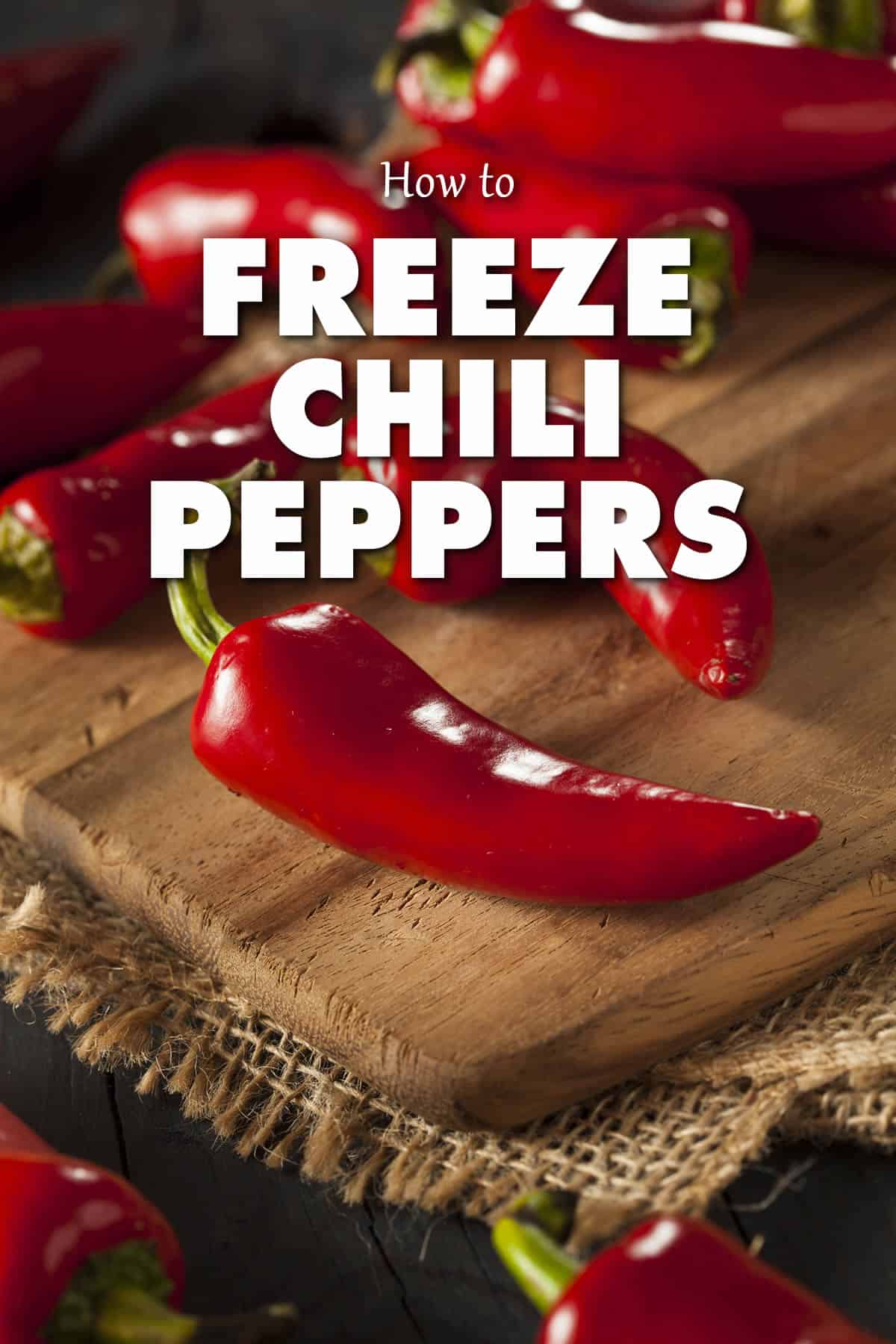Just keep in mind that after you thaw them, the skins usually come right off easily. You can freeze any type of chili pepper this way, including freezing bell peppers, freezing jalapeno peppers, even the hottest of the superhot chili peppers. You can also set out your chopped or whole fresh peppers onto a baking sheet and set it into the freezer before bagging. Then, once they are frozen, transfer them to freezer-safe bags and seal them up. If you do feel the burning sensation, wash your hands thoroughly. There are many methods to help. Learn more about how to stop the chili pepper burn. After about 6 months, they start to lose quality and may suffer from freezer burn. It is good to freeze them in portions that you normally use, but if you freeze them in a very large bag, they should break apart fairly easily so you can keep the unneeded portion frozen. They will most likely be softer, however, than fresh peppers, so consider this for the recipe you are making. Cook them into anything from soups and stews, stir fries and more. Frozen peppers can be used to make sauces and hot sauces, and they can also be dehydrated without issue to make powders and seasoning blends. See my post on How to Cook with Frozen Peppers for further information. Enjoy!
How to Freeze Roasted Peppers How to Freeze Stuffed Peppers Dehydrating Chili Peppers How to Pickle Chili Peppers - a Guide How to Ripen Unripe Peppers How to Ferment Peppers Saving Pepper Seeds for Growing Later How to Freeze Peppers How to Can Peppers How to Store Peppers
